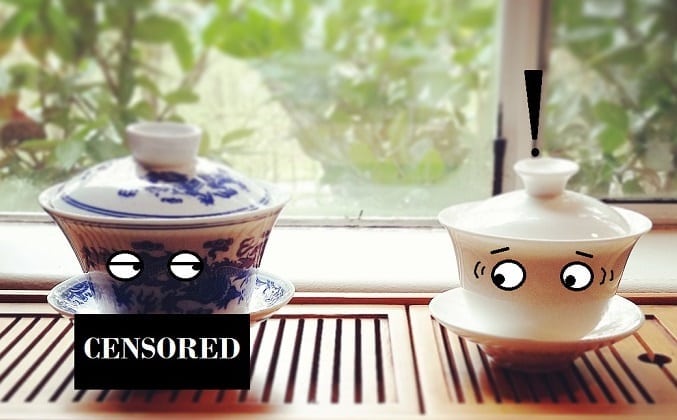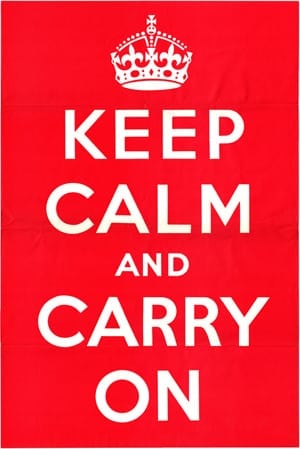I remember when I first tried pu-erh; I couldn’t stand it. The black muck someone pushed in front of me didn’t seem like tea. It had the consistency of thin oil and the smell of sardines. This wasn’t something I could fathom anyone drinking. I was even more surprised to learn that there were pu-erh enthusiasts, and that it could be aged like wine. Prices sometimes rose in the thousands. “That does it,” I said to myself. “That will be my snobbery capper.” The moment I started worrying about the age of my tea would be the moment I’d stop drinking it.

That changed in a matter of years.
Now that I was completely far gone in my pursuit of aged teas, most raw pu-erhs (and all cooked pu-erhs) made before 2009 were met with skepticism. It was the winy note produced by the older ones; for some reason the youngling Yunnans lacked it. Even with that unwritten rule established, I was still a sucker for something unique. Even if it was new.
In this case, not only was it young…but it was produced this year. That made it no older than most Long Jings (a spring-harvested green). Along with some Kenyan Purple Tea (which I loved), Butiki Teas also sent me a rare sheng (read: raw) pu-erh that was dubbed “Wild Purple Buds”. The tea trees for this sheng pu-erh grew at an elevation of 6,000 ft., and naturally possess a higher level of anthocyanin (a flavonoid), which gave the leaves their purplish hue. Unlike the new Kenyan strain that was tailored to produce more anthocyanin, the leaves from this Yunnan cultivar already had it. Likeliest of reasons for this naturally-occuring…uh…”purple”-ing might’ve been the UV radiation exposure due to the higher elevation.

According to Butiki, the leaves for this uniquely young pu-erh were harvested from ancient tea trees (Da Ye, perhaps?) by the Wa tribe. From what I read, there are only 350,000 Wa living in China. They are predominately a rural culture living out of bamboo houses, and they still practice a form of slash-and-burn agriculture. Historically they are known for two bits of infamy – headhunting and their involvement in the opium trade. Most reside along the border of Thailand and Myanmar.
I found this mountaineering tribe far too interesting for my own good. Trying a tea from a former opiate-fueled, headhunting culture? Yeah that screamed “Awesome!” (Not a politically correct thing to say, I know.) It was time to give this purple beast a brew-up.
The dried leaves weren’t that purple to the eye, but there was a semblance of their fresher days in the red-brown palette on display. If I squinted, I could make out a purple leaf piece or two. They were also prettier than their more aged kin, looking more like wild leaves than – say – compost. Like with the Kenyan Purple, there wasn’t much of an aroma to speak of. What I could discern – if I tried – was a mild, wilderness berry-ish scent with a tinge of leafy smokiness. Definitely a sheng pu-erh.

Butiki Teas’ brewing instructions recommended a water temp of up-to-212F and twenty different infusions at three seconds or more – 1 level teaspoon of leaves per cup. I honestly didn’t have that kind of time. The first infusion I went for would be three seconds, but the last two – for note-taking’s sake – would be at my usual thirty-to-forty seconds approach. I also middle-grounded the temperature at 200F.
First infusion (ten seconds…accidental): I meant to do this for only three seconds (per the instructions), but I was having technical difficulties with the camera. That shot the three-second mark up to ten seconds. What resulted was a white tea-ish, pale yellow liquor with a grapy/grassy nose. First sip tasted like a smoker Silver Needle.
Second infusion (thirty seconds): It was the same clear liquor but with a more of a juniper aroma. The taste was slightly smokier, and I could see what Bukiti meant about the presence of oak. Still very white tea-like, though. Was this really supposed to be a pu-erh?

Third infusion (thirty seconds): What the heck? The liquor was still clear, but the aroma…what a change! I detected hints of strawberry and vanilla. The flavor echoed this – fruit-filled, creamy and sweet. Trailing close behind was a peaty finish. Very strange.
Fourth infusion (forty seconds): As expected, no change in the color. However, the same could not be said for the aroma; it was like blueberry-scented white wine. Flavor, though? Okay, forget the blueberry. That damn strawberry cream spiel was still going strong. How was that happening with so clear a cup? I dunno…
I think this tea was trolling me.

Fifth infusion (forty seconds): Still zero change in color. The wet, spent leaves in the gaiwan smelled like boiled artichoke hearts. The liquor itself was now fully reminiscent of a strawberry-cream-flavored white tea. I should know, I’ve had ’em. Taste-wise, though, it possessed only a faint fruit presence, a nutty top note, and a wood-smoked leafy finish.
To conserve time while note-taking, I actually poured the remaining contents of each of the five infusions into one cup. Only when they were combined did they taste anything remotely like sheng pu-erh. Well, a pu-erh that’d been blended with whiskey-dipped peat moss.
I’d gone five rounds with this pu-erh, and it still had all its strength – taunting me with its deceptively clear liquid. I ran out of the time I allotted myself in reviewing it and decided upon an intermission. There was someplace I had to be. However…
When I returned, I intended to go all in with the same leaves – Texas Hold ‘Em-style – in one last cuppa cage match. This time I opted for a Western Assam approach; five-minute brew time, boiling water temp. That would surely kill it. If not, I was fresh out of ideas.

Sixth infusion (five minutes): FIGHT! The liquor was still clear-to-pale yellow. The aroma was almost straight leaf, only more prairie-like. It tasted like the lewd embrace between a lemon and a maple leaf. Not fair! Where was it getting its resilience?!
SEVENTH! infusion (lost track o’ time): Now it was showing signs of fading. The flavor had receded to something more akin to a Bai Mu Dan – nutty, lightly fruity, and somewhat earthy. I may have sipped its remaining life, but the leaves still looked up at me. Always taunting.
This was one tough sheng pu-erh. It even stood steadfast where most Assams would’ve waved a white [tea] flag. There was just no killing it. I had been owned, “pwned”, schooled, defeated, beaten and broken by a purple leaf. And the fight tasted fantastic.

To purchase Wild Purple Buds Pu-Erh from Butiki Teas, go HERE.
Addendum: The brewing instructions per the Butiki site says to use 1 level tablespoon, not teaspoon.
(For a definition of “pwned” – for ye n00bs – go HERE.)

























